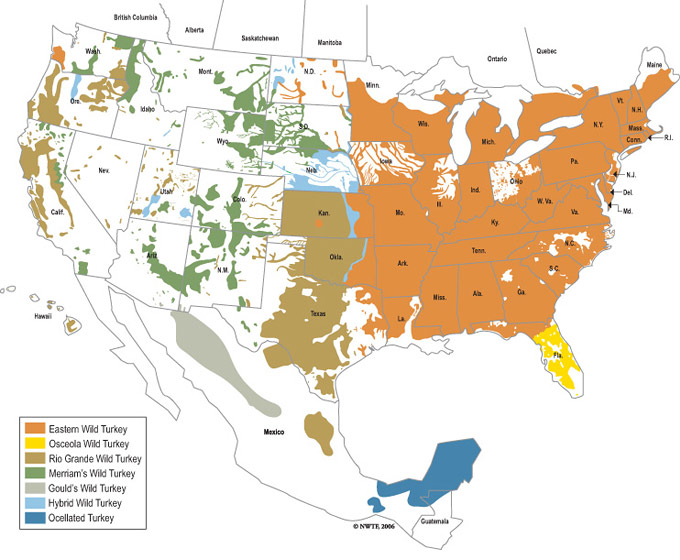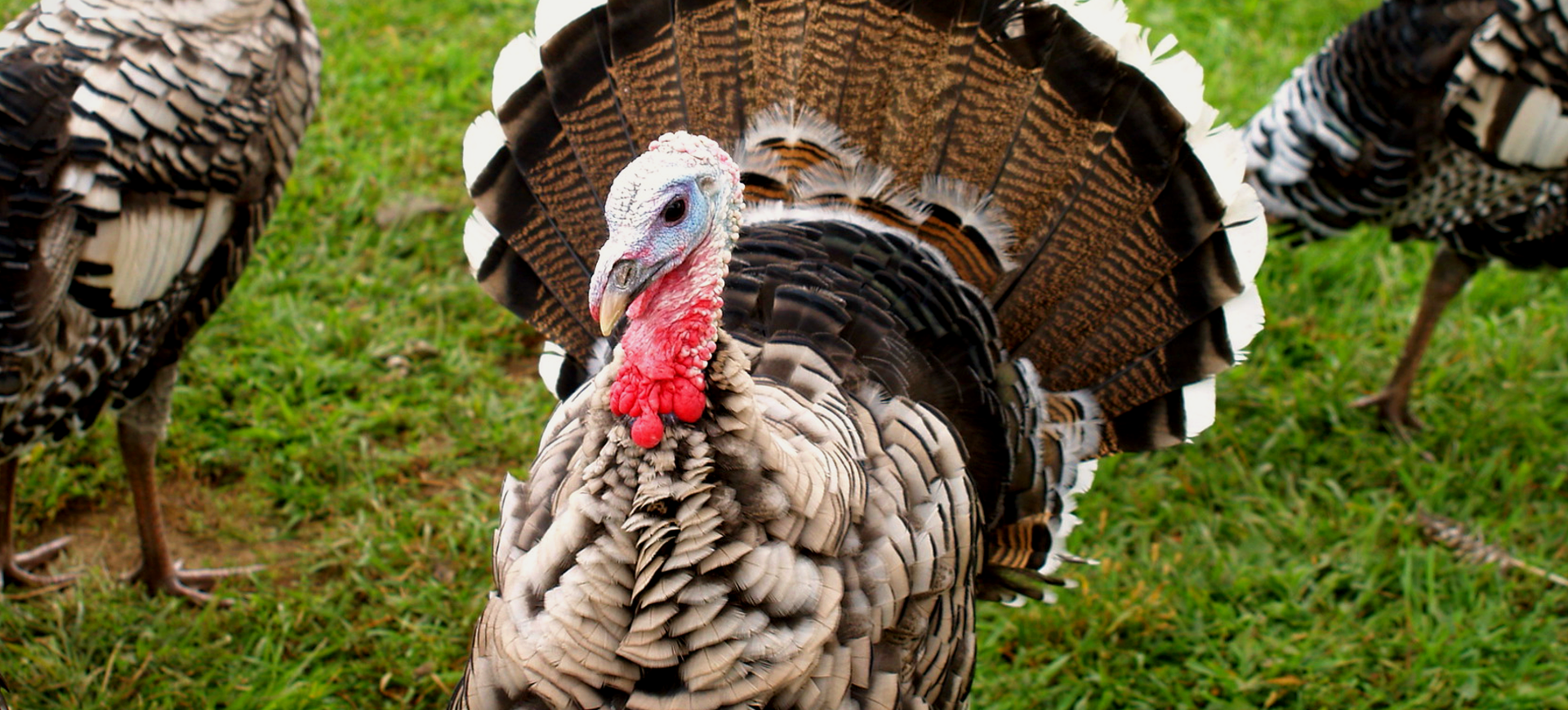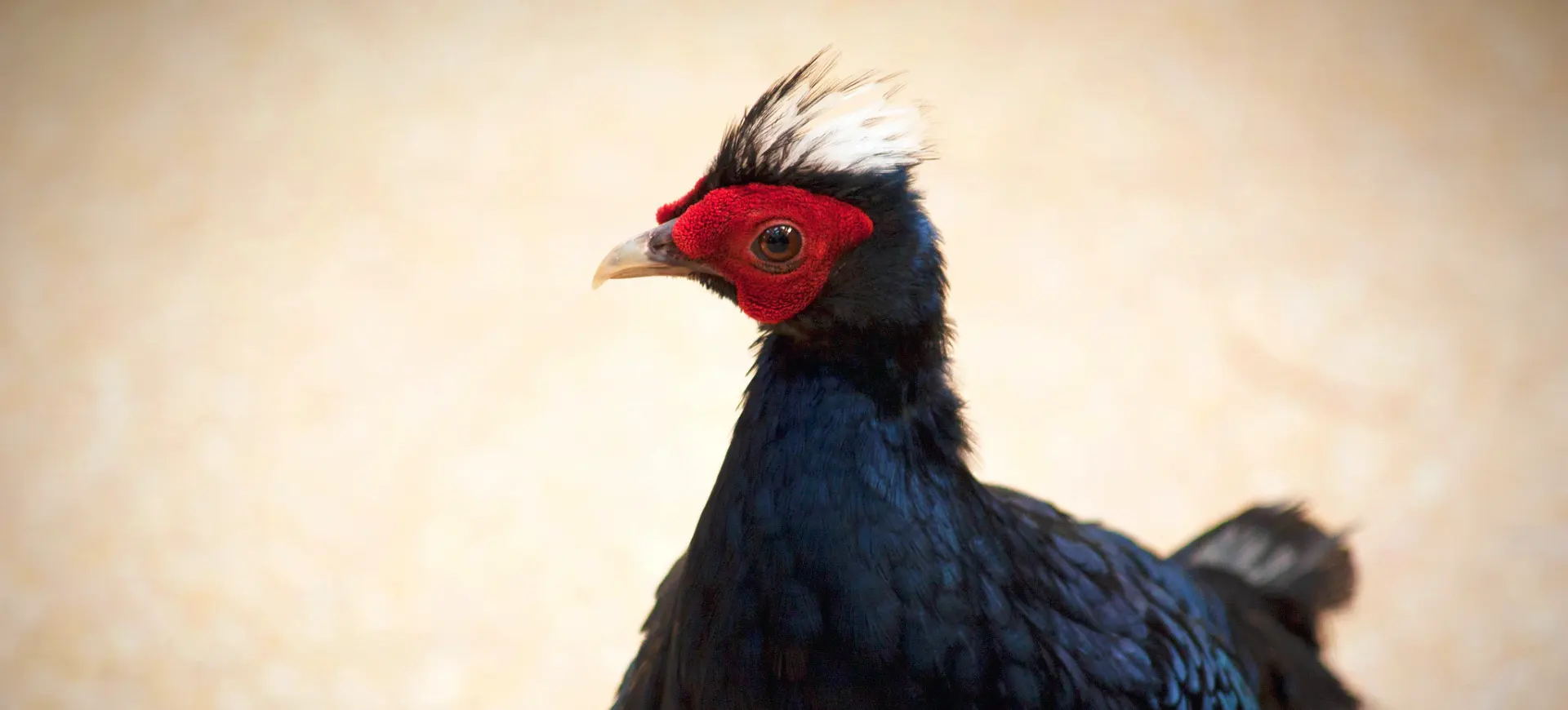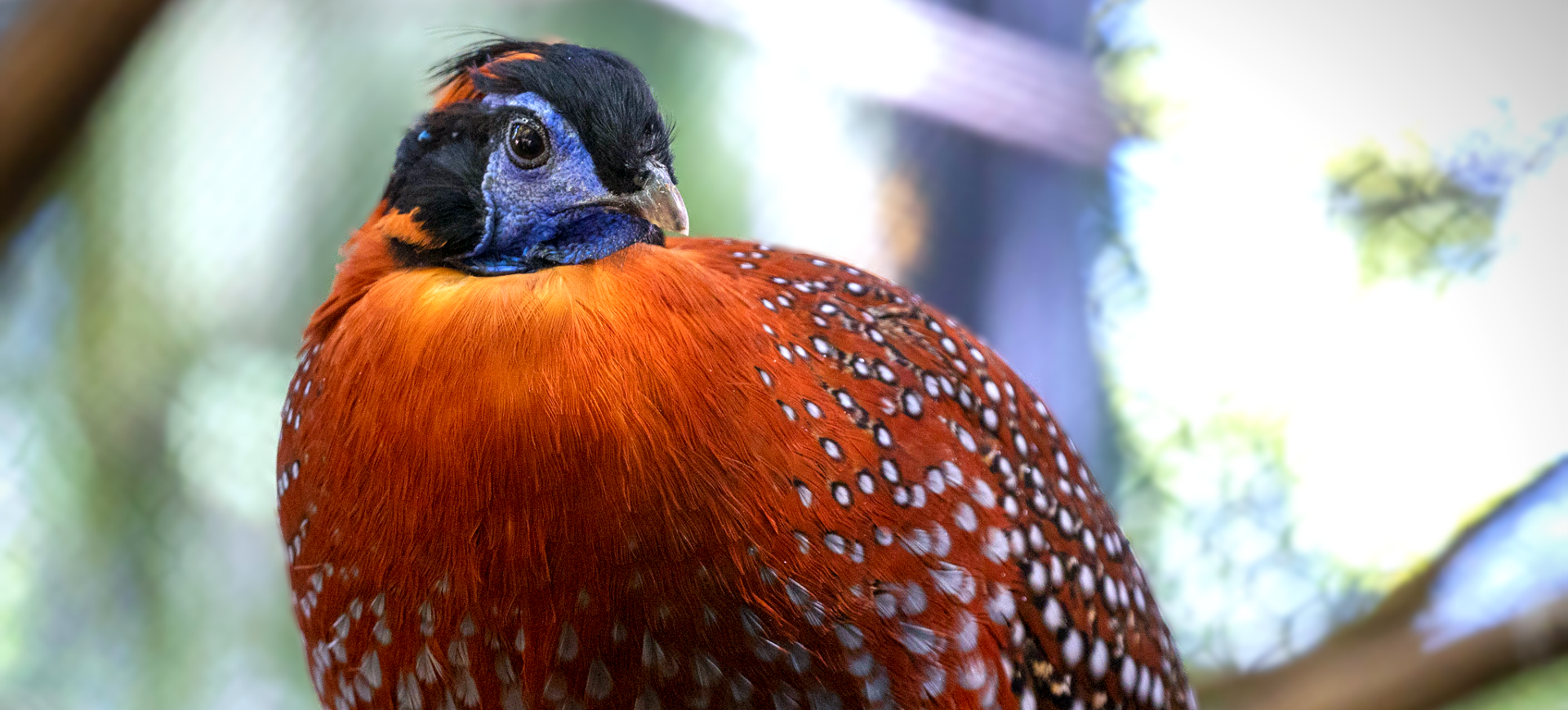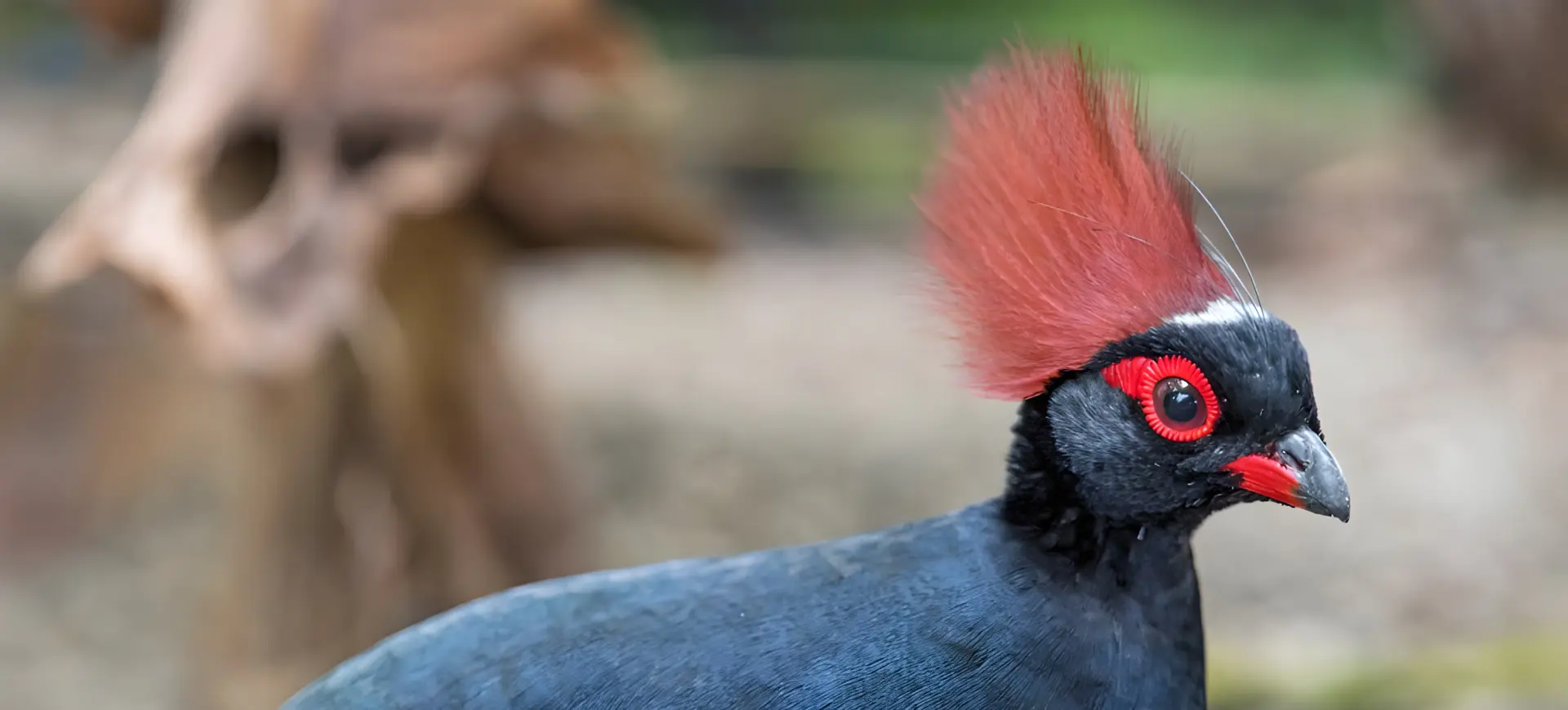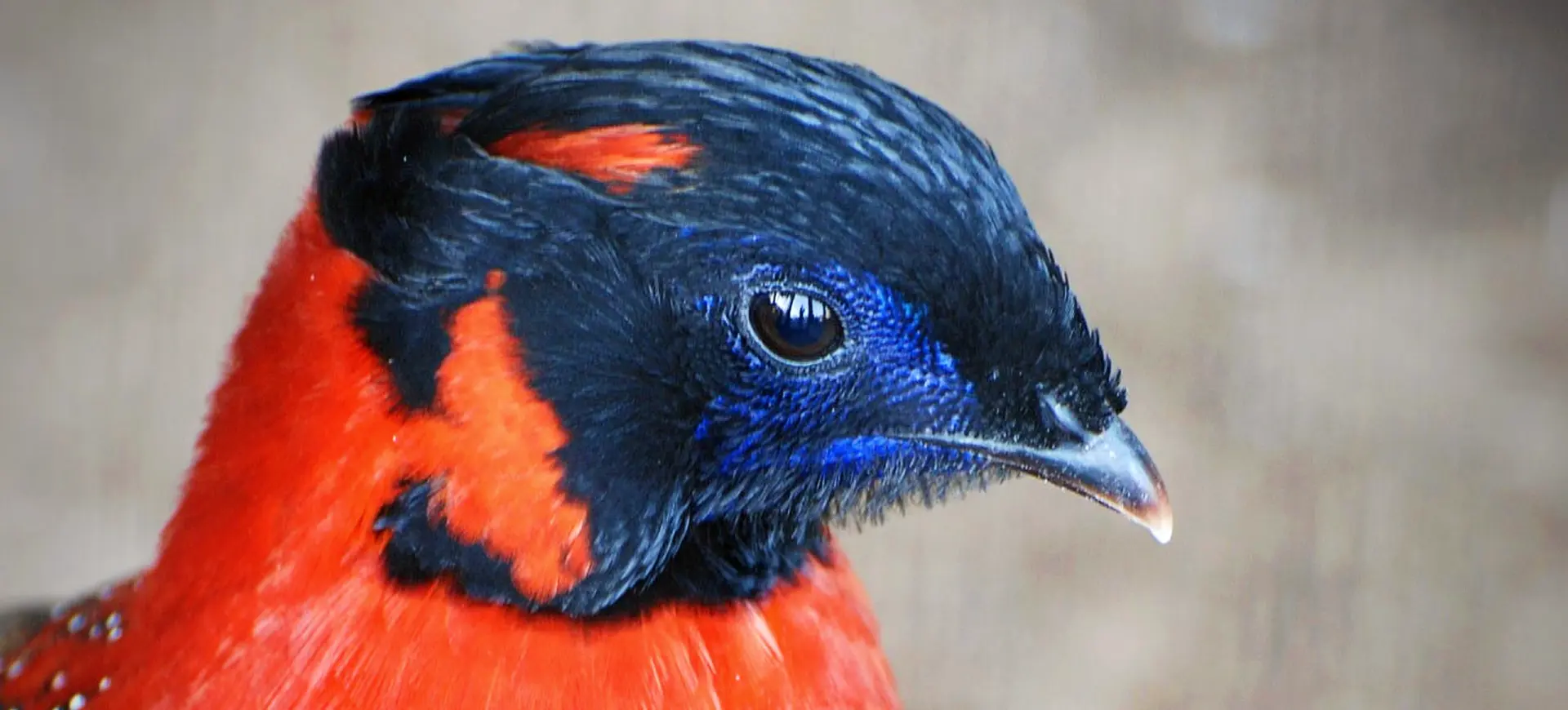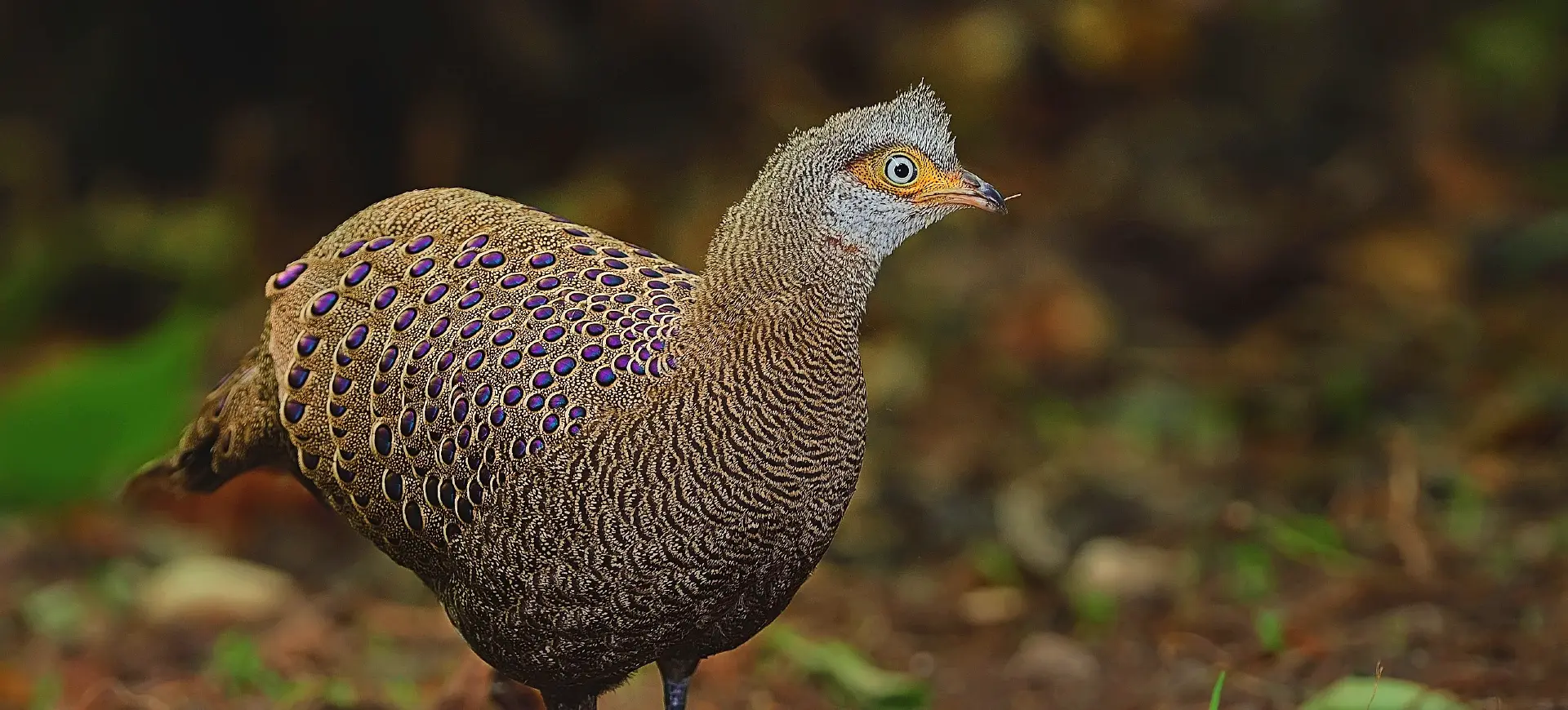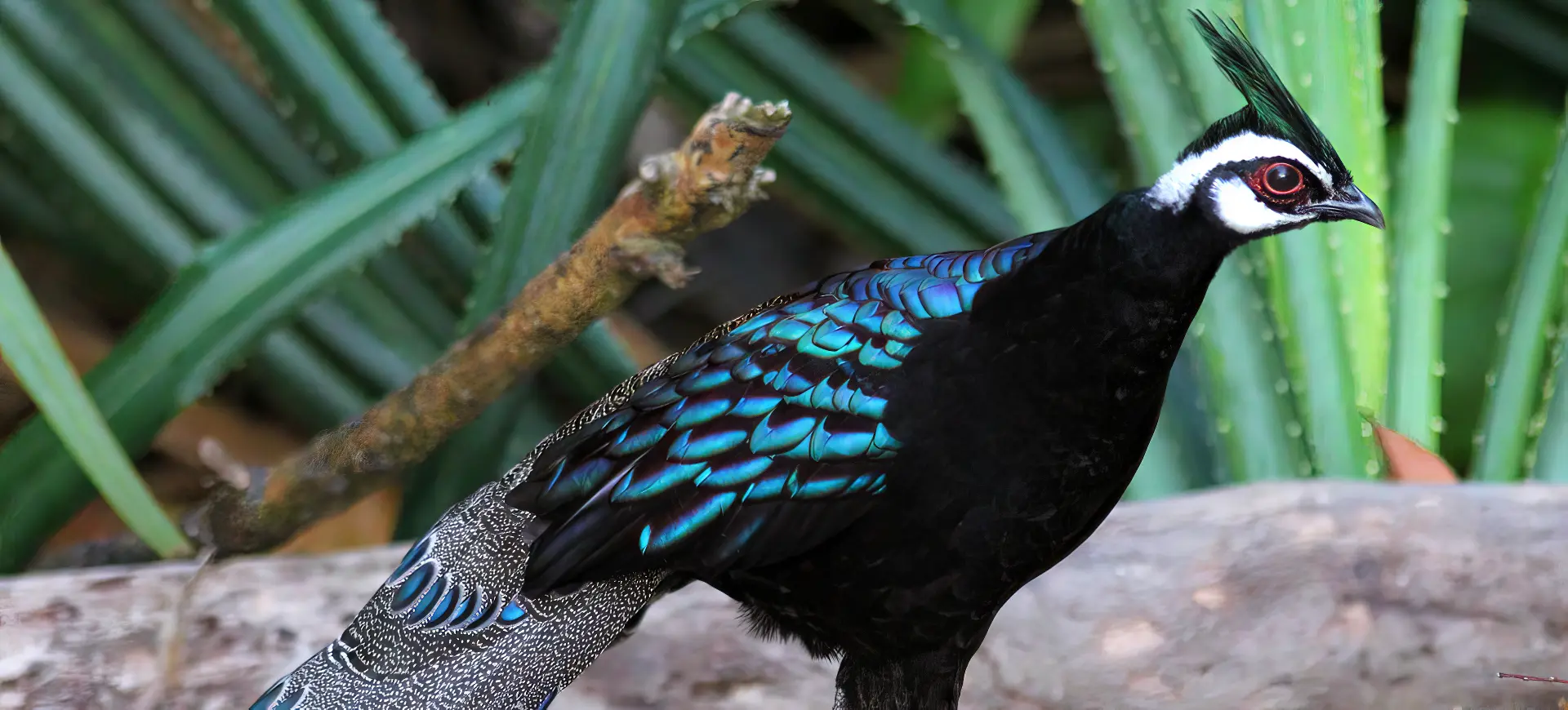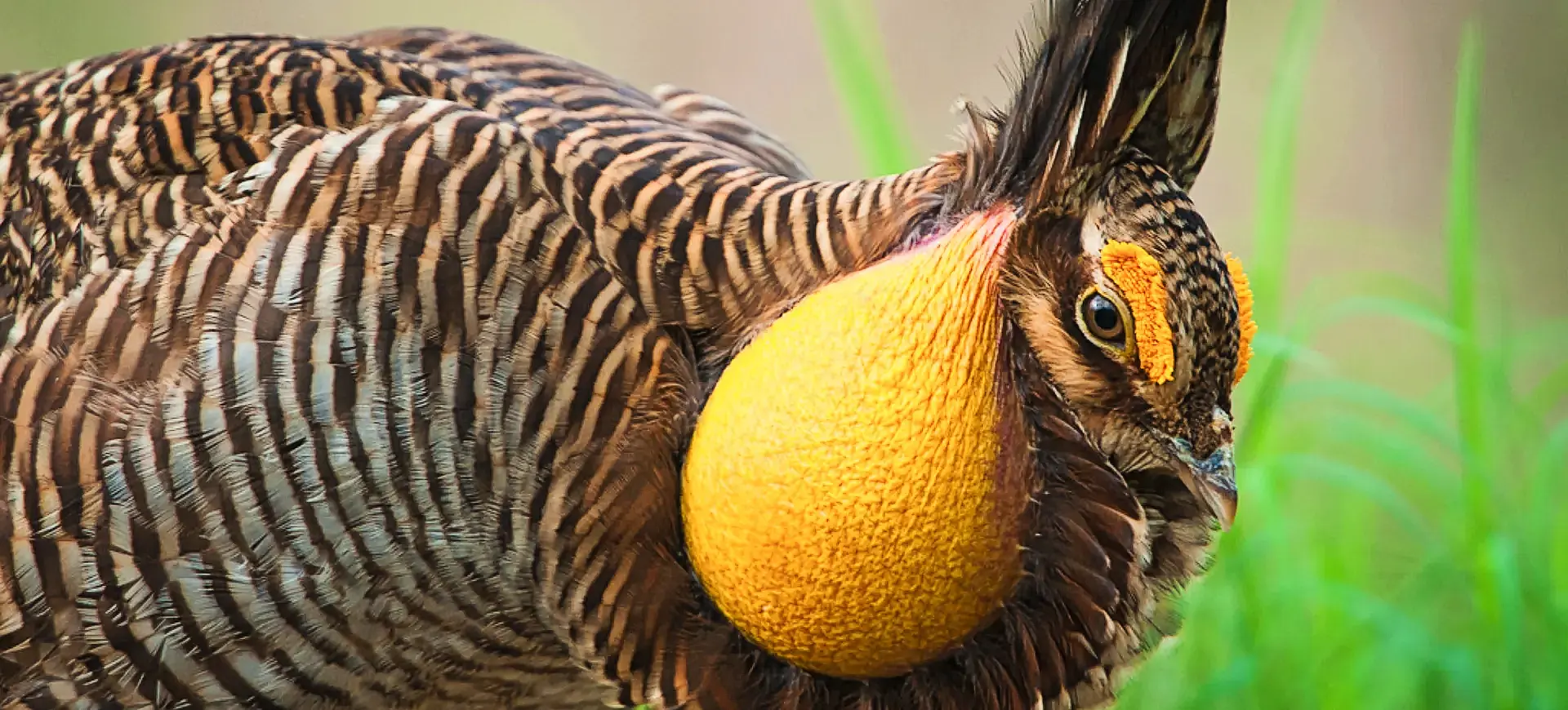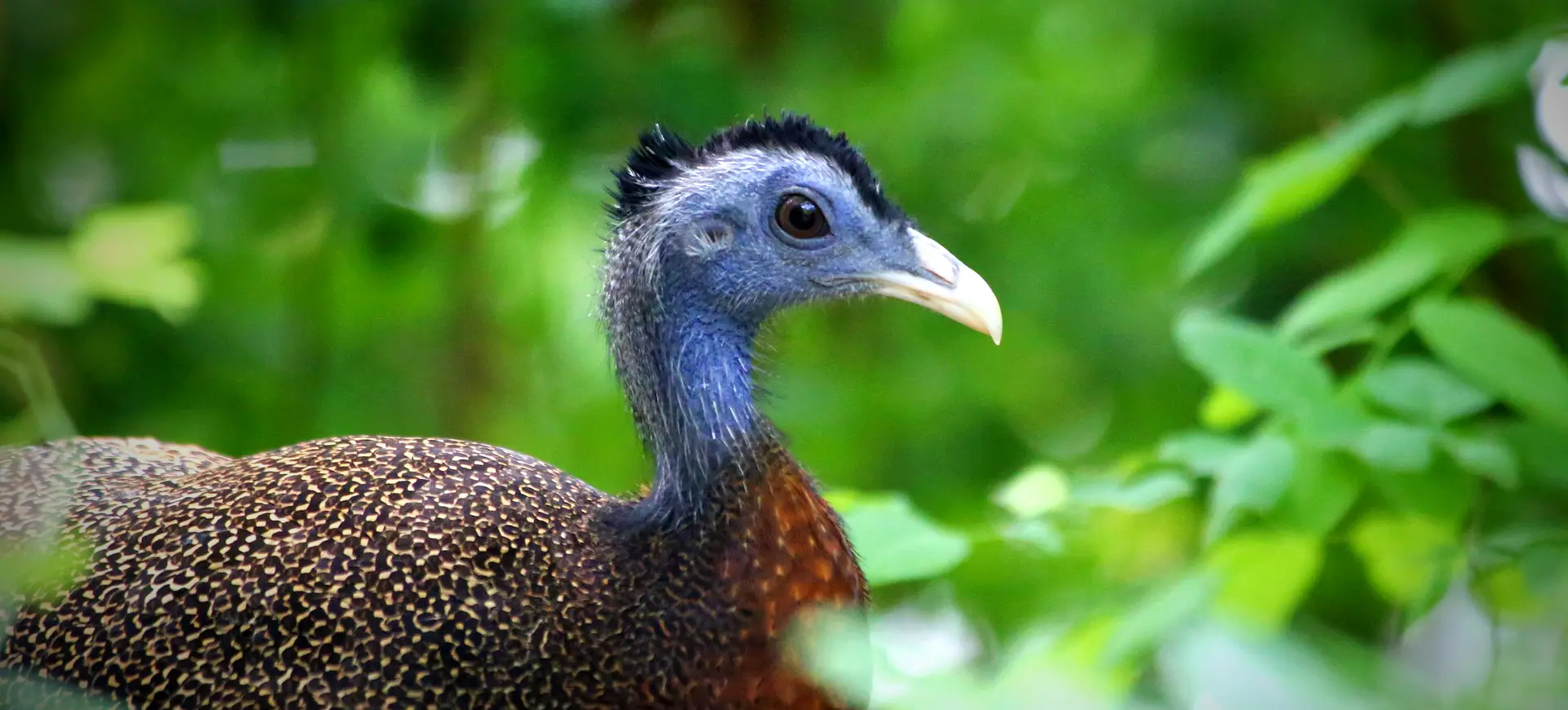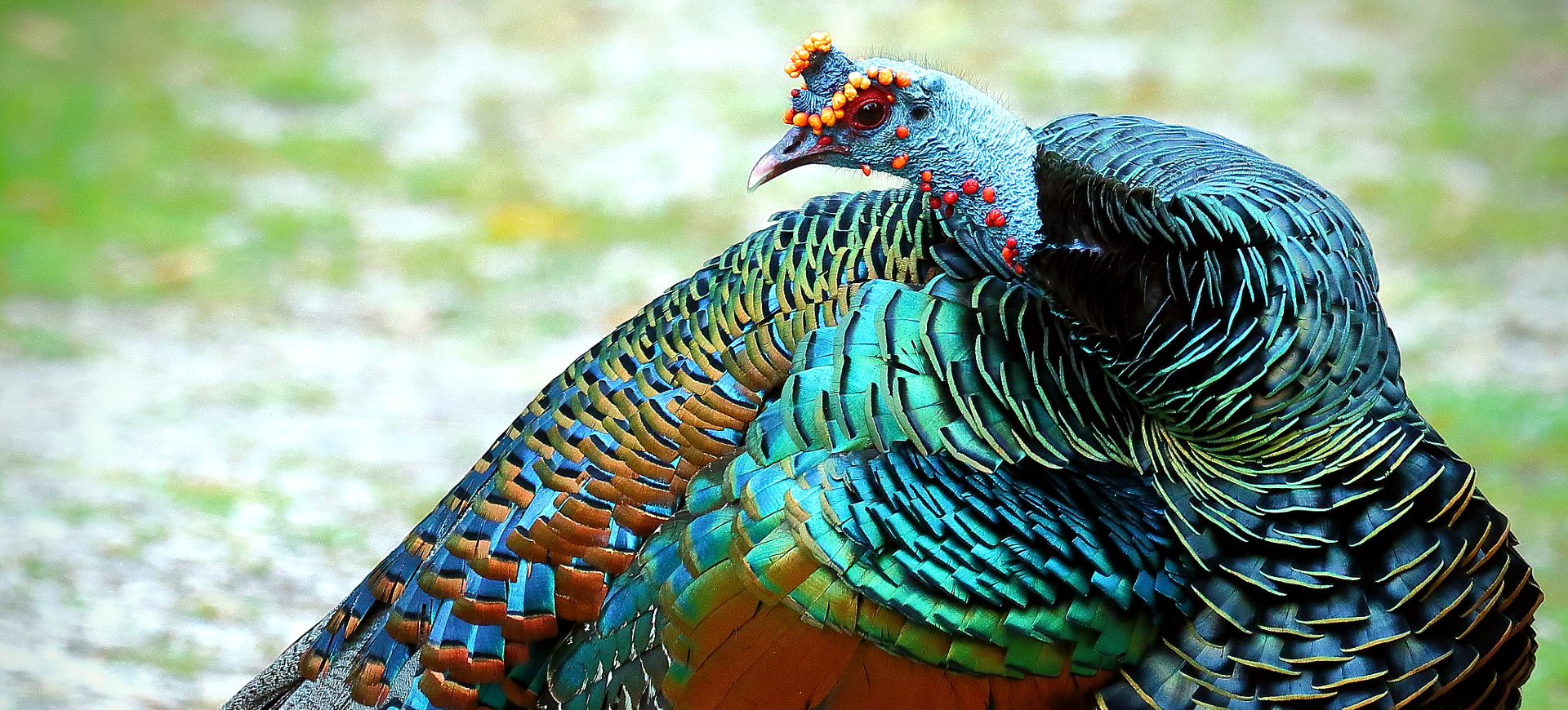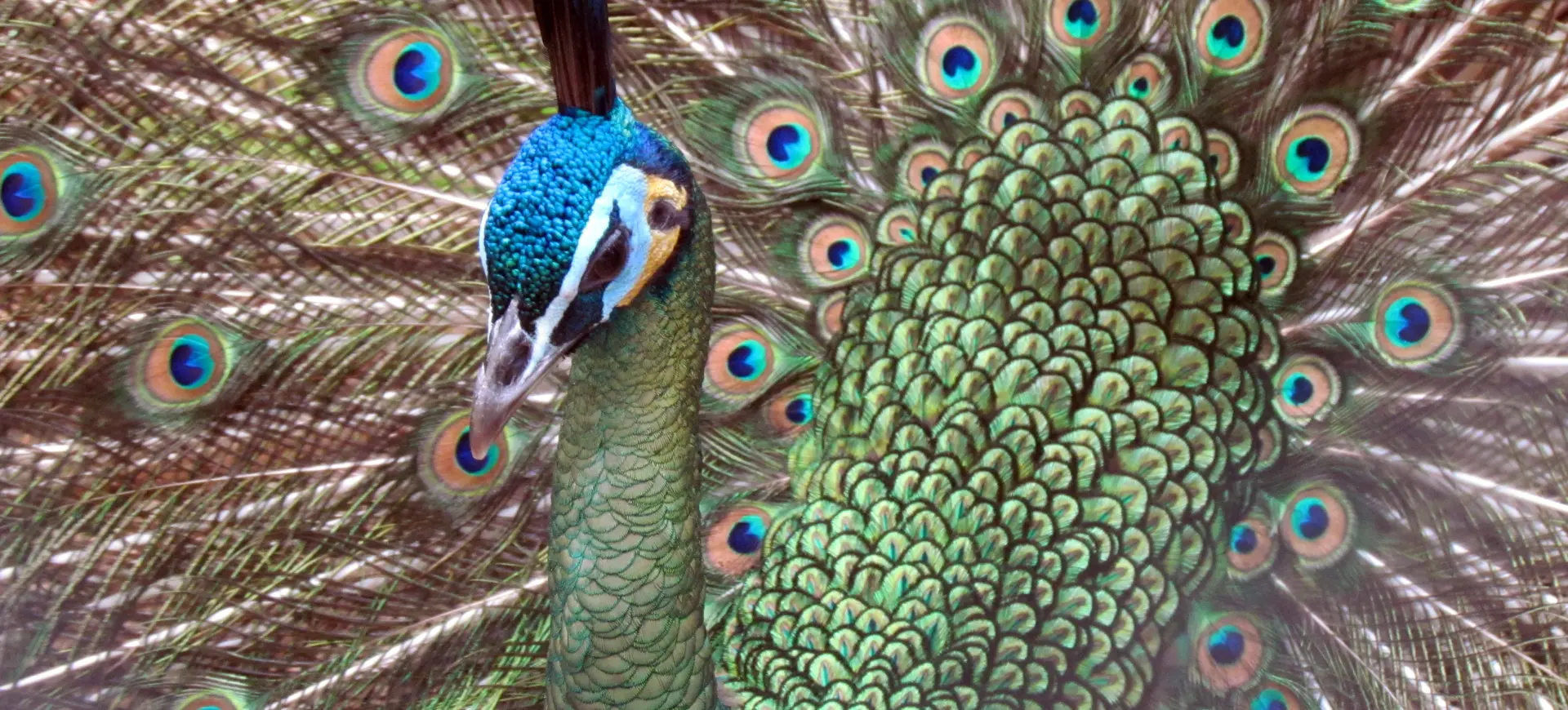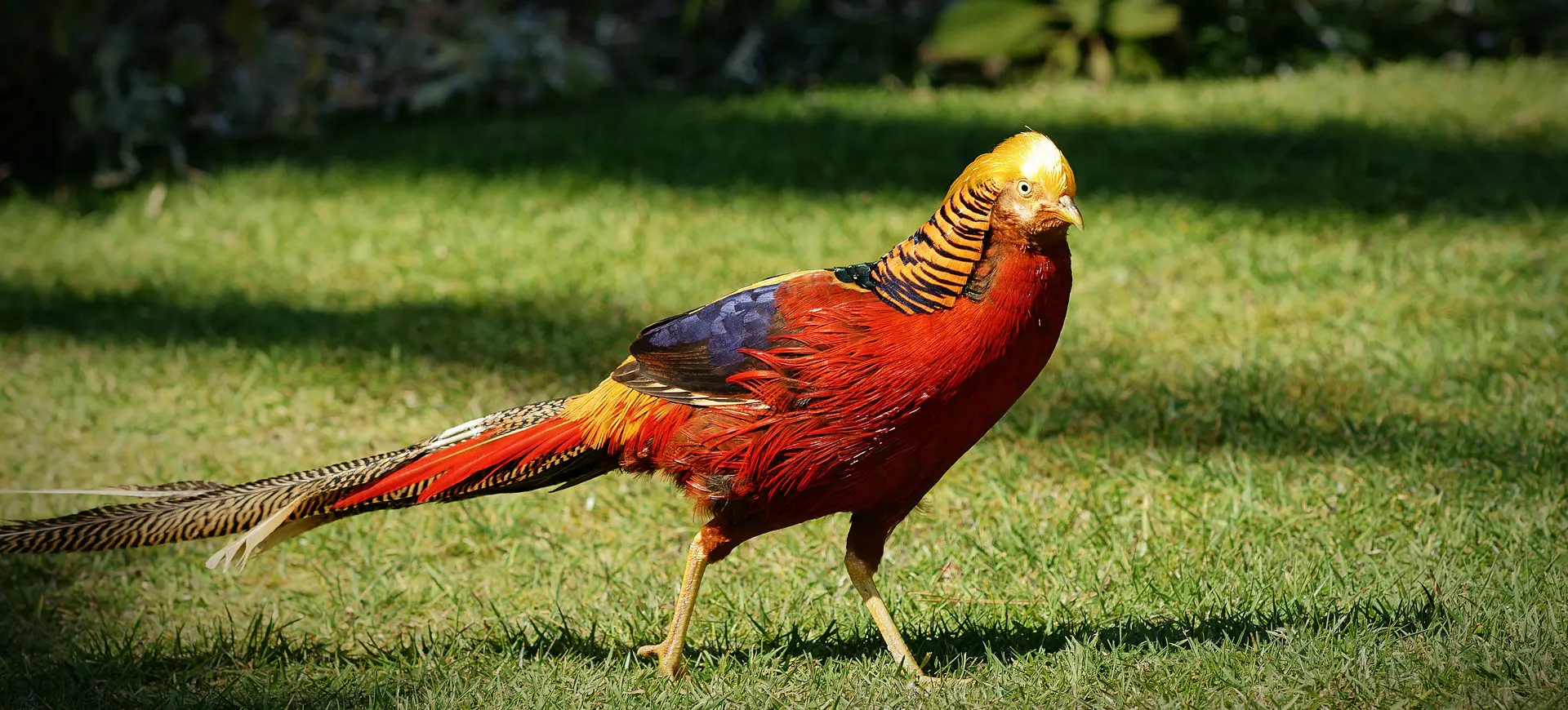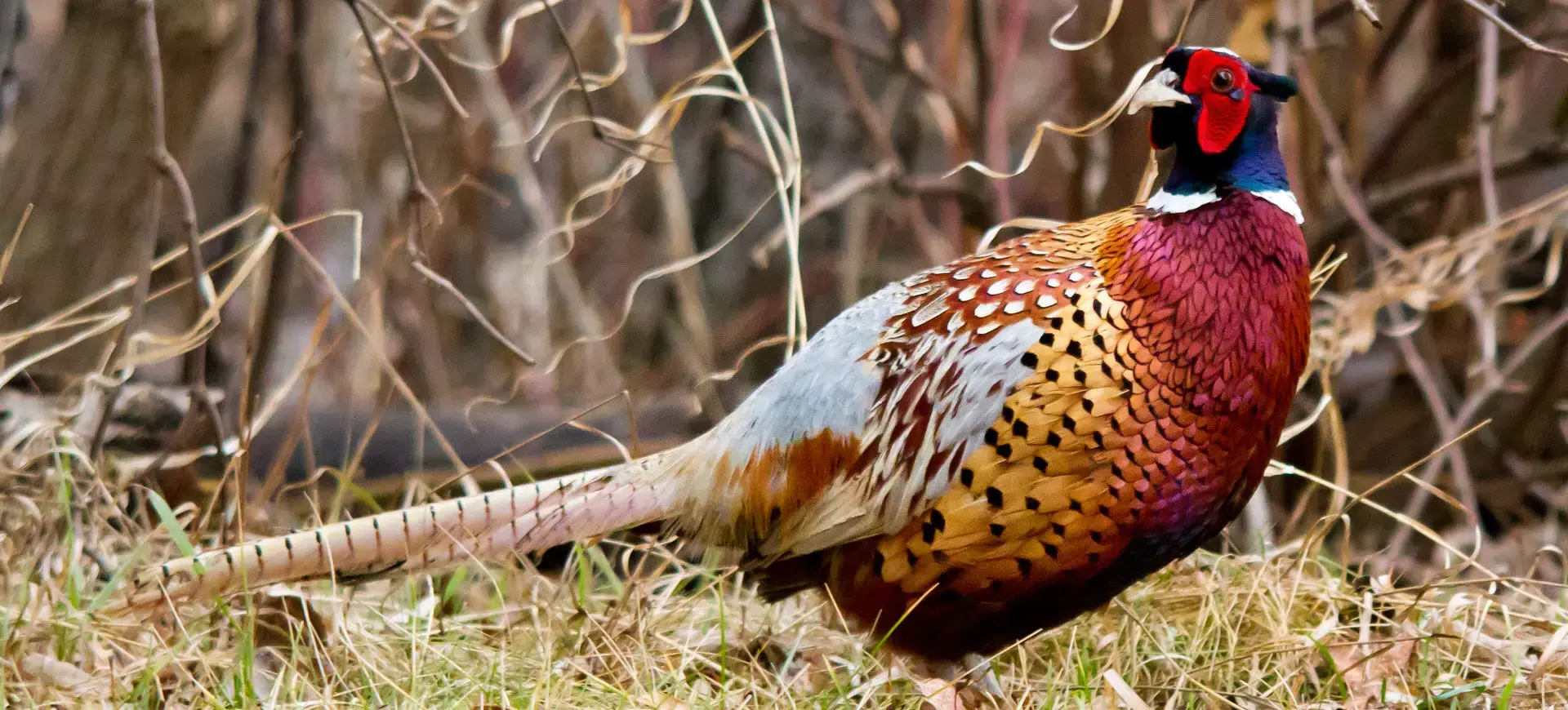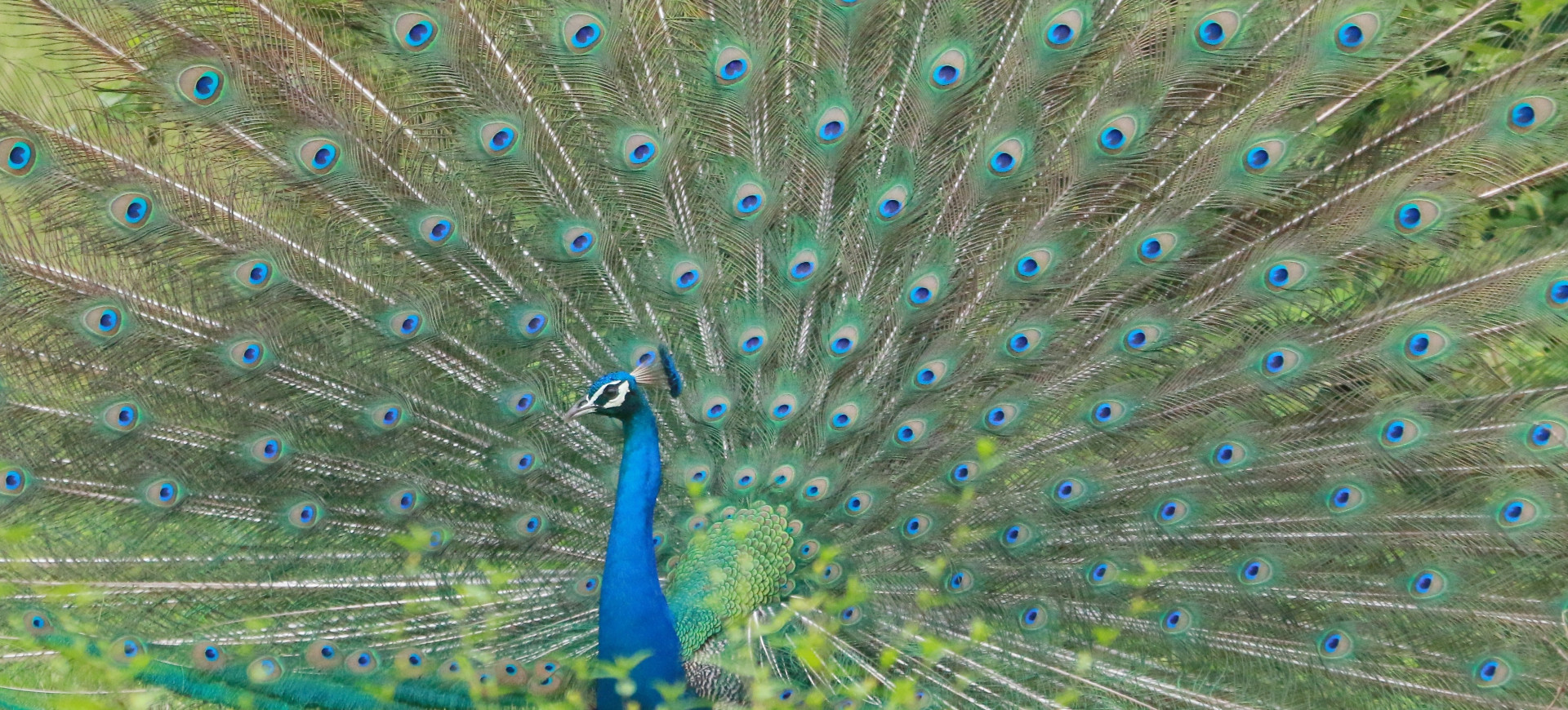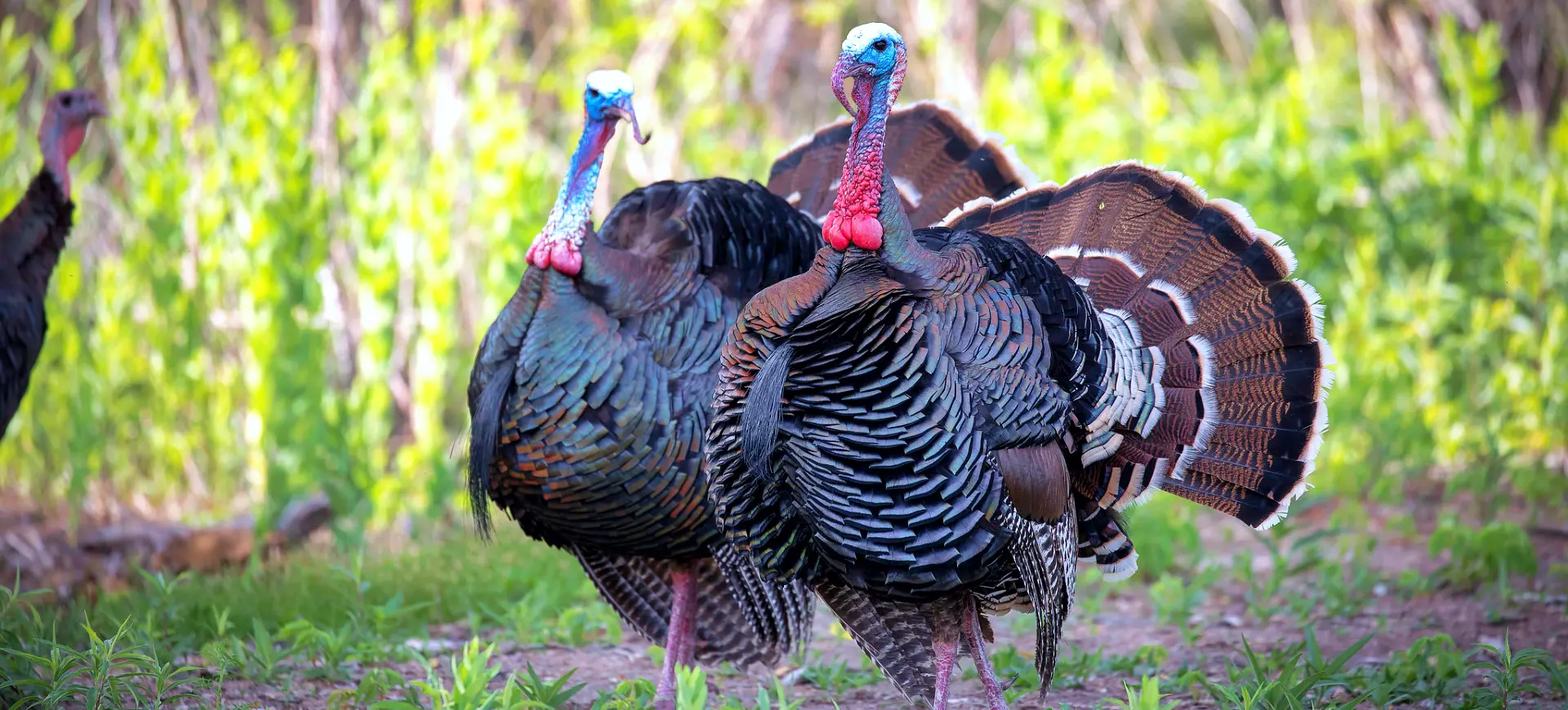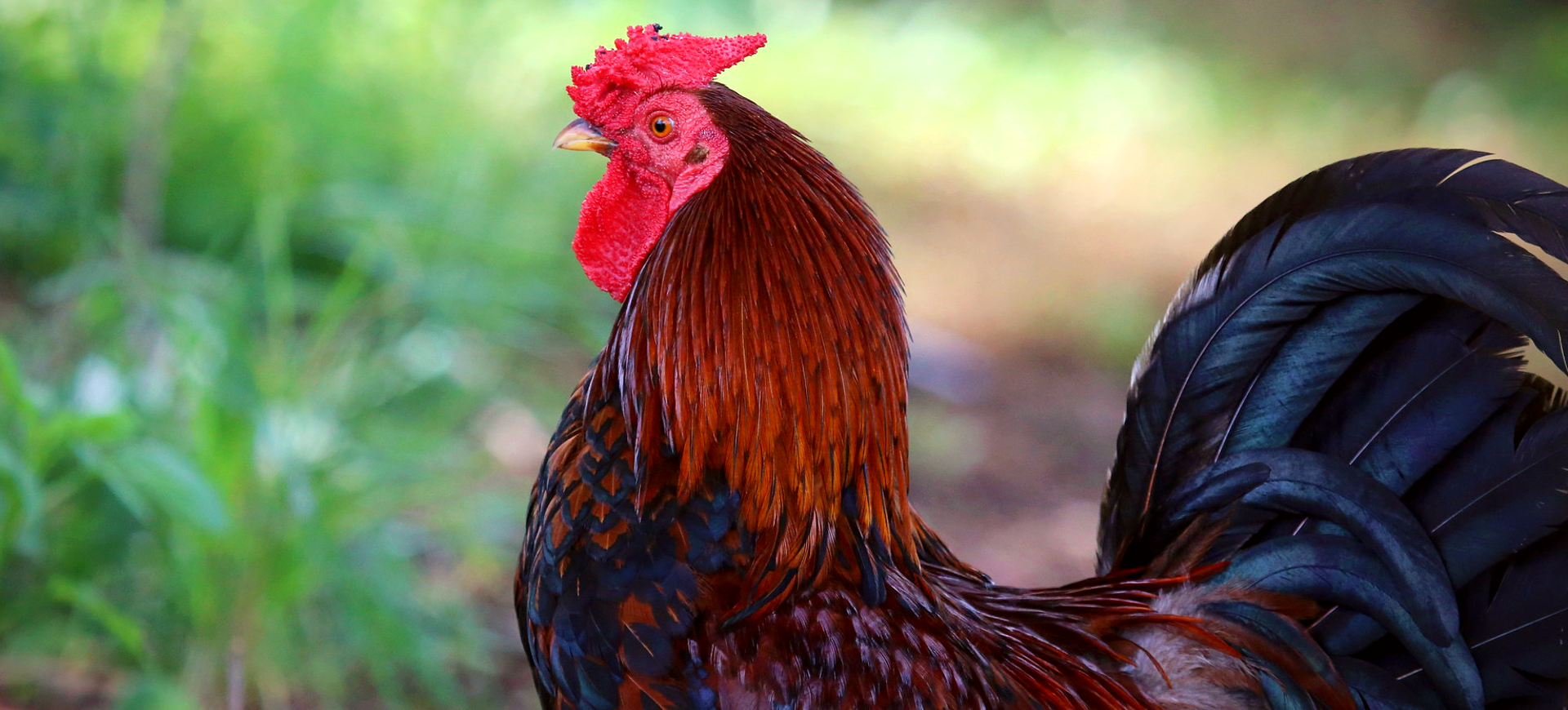Overview
Merriam’s Turkey (Meleagris gallopavo merriami) is a subspecies of wild turkey native to the Rocky Mountains and the neighboring regions of the United States. Characterized by its striking appearance, this bird has a distinctive white-tipped tail and lower back feathers, contrasting beautifully with its dark plumage. Adult males, known as toms, showcase iridescent bronze and black feathering, a large fan-shaped tail during courtship displays, and a “beard” of modified feathers protruding from the breast. Females, or hens, are smaller and less colorful than males, with more muted brown and gray tones, allowing them to blend into their environment, especially during the nesting season.
Merriam’s Turkeys are highly adaptable, thriving in various forested habitats, including ponderosa pine, mountain regions, and mixed conifer forests. They exhibit a complex social structure, forming flocks that vary in size depending on the season. During the winter months, flocks can merge, forming large groups, while in the breeding season, males become more solitary or form small bachelor groups. This turkey subspecies plays a significant role in its ecosystem, serving as predator and prey. Their omnivorous diet consists of acorns, nuts, seeds, fruits, insects, and small vertebrates, contributing to the control of insect populations and the dispersal of seeds.
The mating season for Merriam’s Turkey begins in early spring, signaled by males’ elaborate courtship displays, which include puffing up their feathers, fanning their tails, and making gobbling sounds to attract females. Hens lay a clutch of 8 to 12 eggs in a well-hidden nest on the ground, with the incubation period lasting about 28 days. The young, known as poults, are precocial, leaving the nest shortly after hatching to follow their mother, who provides them with protection and teaches them how to forage.
Taxonomy
Kingdom
Phylum
Class
Order
Family
Genus
Species
Sub Species
Type
RANGE
Current distribution:
Merriam's Turkey has a relatively stable distribution in the wild, primarily within the mountainous regions of the western United States. Conservation efforts, including habitat management and reintroduction projects, have helped maintain and expand their populations within suitable habitats. They are also found in parts of Montana, South Dakota, and even northern Mexico, where reintroduction efforts have succeeded.
The adaptability of Merriam's Turkey to various forested environments has allowed them to thrive in areas where their habitat is preserved and managed effectively. However, their distribution is influenced by the availability of suitable nesting sites, food sources, and water, making conservation of these resources critical for their continued success in the wild.
Physical Description:
Merriam’s Turkey males are notable for their impressive size, with mature toms typically weighing 18 to 30 pounds (8.2 to 13.6 kg) and standing up to 4 feet (1.2 meters) tall. Their body feathers display a mesmerizing iridescence, blending bronze, green, and gold, which is particularly striking in sunlight. The tail feathers, edged in a characteristic white, are used in spectacular displays during the breeding season to attract females. Their heads, devoid of feathers, change from blue to red in response to emotional states and physical conditions.
Females are smaller, weighing 8 to 12 pounds (3.6 to 5.4 kg), and their plumage is designed for camouflage, featuring a mix of brown, gray, and white, essential for nest protection. Both sexes have powerful legs equipped with sharp spurs, although those of the males are more developed and used in combat with rivals. The “beard” on the chest of males, a cluster of specialized feathers, can grow over 10 inches (25 cm) in length, serving as a sign of age and vigor.

Lifespan: Wild: ~5 Years || Captivity: ~10 Years

Weight: Male: 18-30 lbs (8.2-13.6 kg) || Female: 8-12 lbs (3.6-5.4 kg)

Length: Male: 39-49 in (99-125 cm) || Female: 30-37 in (76-94 cm)

Height: Male: 47-56 in (119-142 cm) || Female: 31-43 in (79-109 cm)

Wingspan: Male & Female: 54-59 in (137-150 cm)

Top Speed: 25 mph (40 km/h)
Characteristic:
Native Habitat:
Merriam’s Turkey is native to the mountainous regions of the western United States, including Arizona, New Mexico, Colorado, Wyoming, and parts of Montana and South Dakota. Their preferred habitat consists of open forests and edges where forest meets grassland, particularly areas dominated by ponderosa pine, oak, and mixed conifer forests. These environments provide the necessary resources for nesting, roosting, and foraging, offering a blend of cover and open spaces essential for their survival.
These turkeys are well-adapted to their habitats, using the dense tree cover for roosting at night to protect themselves from predators. During the day, they prefer open areas where they can forage for food while looking for danger. The ability to fly enables them to escape ground predators, while their keen eyesight helps them detect threats from afar.
Climate Zones:
Biomes:
Biogeographical Realms:
Continents:
Countries:
Diet:
Diet & Feeding Habits:
Merriam’s Turkey is omnivorous, with a diet that adjusts seasonally to include the most available food sources. In the spring and summer, their diet primarily consists of insects, small amphibians, and sometimes small reptiles, providing essential protein for growth and egg development. During the fall and winter, their diet shifts to acorns, nuts, seeds, and berries, abundant in their mountainous and forested habitats.
Foraging is a social activity in Merriam’s Turkey, often conducted in flocks. In this activity, turkeys scratch the forest floor for food. Their ability to adapt their diet based on seasonal availability is a key factor in their survival and success as a species. Their mothers teach young turkeys, or poults, to forage, learning to select food that provides the nutrients necessary for their rapid growth and development.
Mating Behavior:
Mating Description:
The breeding season for Merriam’s Turkey occurs in the spring, signaled by increasing daylight and warming temperatures. Males engage in elaborate displays to attract females, including puffing up their feathers, fanning their tail feathers, dragging their wings, and making gobbling sounds. These displays showcase their physical condition and dominance to potential mates and rivals.
Females select mates based on the quality of these displays and the territory held by the males. Once mated, the female is solely responsible for nest construction, egg laying, and incubation. Nests are typically shallow depressions on the ground, lined with leaves and hidden underbrush or other vegetation for camouflage. The hen lays an average of 10-12 eggs, which she incubates for about 28 days until they hatch.
Reproduction Season:
Birth Type:
Pregnancy Duration:
Female Name:
Male Name:
Baby Name:
Social Structure Description:
Merriam’s Turkey’s intricate social dynamics are crucial to their survival and reproductive success. The formation of flocks, often segregated by age, sex, and breeding status, facilitates a myriad of benefits that enhance their chances of survival in the wild. Bachelor groups composed solely of males serve as a means for competition and hierarchy establishment outside the breeding season and as a strategy for increased vigilance against predators. Conversely, females tend to band together with their offspring, creating nurturing environments that ensure the safety and growth of the younger turkeys.
As the seasons shift, so does the structure of these flocks, adapting to the changing environmental conditions and survival needs. Winter brings about larger congregations of Merriam’s Turkey, merging different flocks for the dual purpose of conserving body heat and enhancing protection against predators during the colder months. This seasonal flock amalgamation allows for shared vigilance, making it more challenging for predators to target individual turkeys. The communal aspect of these gatherings also aids in discovering and utilizing limited winter food and water resources, ensuring the survival of a greater number of individuals through harsh conditions.
Groups:
Conservation Status:
Population Trend:
The population of Merriam’s Turkey in the wild is considered stable, thanks to successful conservation efforts that include habitat management, protection, and reintroduction projects. These efforts have not only helped to maintain current populations but have also allowed for expansion into historically occupied areas. Monitoring programs and hunting regulations are in place to ensure that populations remain healthy and sustainable.
Conservation organizations and wildlife agencies work together to manage forest habitats, protect water sources, and regulate hunting to support Merriam’s Turkey populations. Public education and involvement in conservation projects also play a key role in the subspecies’ ongoing success and stability in the wild.
Population Threats:
The primary threats facing Merriam’s Turkey are closely linked to human activities, particularly habitat loss resulting from deforestation, urbanization, and land use practices. These changes reduce the available space for Merriam’s Turkey to live and forage and fragment their habitats, making it difficult for them to access all necessary resources for survival and reproduction. Such habitat alterations can also lead to increased encounters with humans and domestic animals, potentially introducing stress and disease to these wild turkey populations.
Natural predation poses another significant challenge for Merriam’s Turkey, particularly for the more vulnerable eggs and young poults. Coyotes, bobcats, and various birds of prey are common predators, exploiting any opportunity to feed on the eggs and young of these turkeys. While predation is a natural ecological process, the impact can be exacerbated by habitat changes that may make nests more exposed or limit the turkeys’ ability to find shelter. Moreover, diseases and parasites present an ongoing concern, capable of swiftly affecting turkey populations. Maintaining healthy, diverse habitats can provide a buffer against these threats, supporting stronger, more resilient turkey populations capable of withstanding such challenges.
Conservation Efforts:
The main threats to Merriam’s Turkey are closely tied to human activities that alter their natural habitats. Deforestation for agricultural expansion, urbanization, and changing land use patterns disrupt the continuity of the forests and meadows crucial for survival, making it difficult for them to find shelter and food. These changes reduce the quality of their living spaces and fragment populations, limiting their ability to migrate and access diverse food sources.
Predation poses a significant natural challenge, with coyotes, bobcats, and various birds of prey targeting eggs and vulnerable young poults. This natural risk is exacerbated by habitat loss, which can expose nests to predators. Additionally, diseases and parasites threaten these birds, although maintaining healthy, well-managed habitats can help reduce the incidence and spread of these afflictions, underscoring the importance of ecological balance in conservation efforts.
Additional Resources:
Fun Facts
- Merriam’s Turkey is named after C. Hart Merriam, an American biologist who first described the subspecies.
- They can fly short distances up to 55 mph but prefer running to escape.
- The gobble of a male Merriam’s Turkey can be heard up to a mile away under ideal conditions.
- They roost in trees at night to avoid ground predators, a behavior that also helps regulate their body temperature.
- Merriam’s Turkey has excellent vision but poor night vision, relying on roosting in safe locations to avoid nocturnal predators.
- They play an important role in their ecosystem by dispersing seeds and controlling insect populations.
- Fossil records indicate wild turkeys have existed in North America for over 5 million years.
- They have a unique ability to change the color of their head from blue to red when excited or threatened.
- Merriam’s Turkey can adapt to various elevations, from lowland deserts to high mountain forests.
- The subspecies has benefited significantly from conservation and management efforts, showcasing the success of targeted wildlife conservation strategies.

